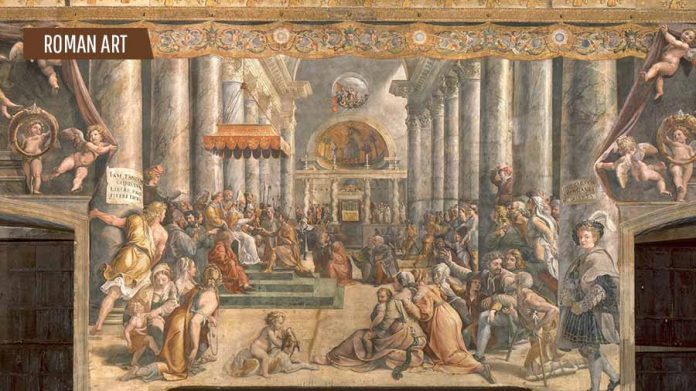Ancient Rome has been considered to be one of the largest civilizations in the history of humanity. The subject of ancient Roman Art is thus wide-ranging as it comprises classical art practiced in Africa, Asia, and Europe for more than 1,000 years. Old Roman art dates back to before 500 BC and is most identifiable. In the classical Greek period, Roman art was inspired by popular artistic traditions. The Romans learned everything they could from traditions to create an artistic style of themselves.
Here we compiled the Top 10 Roman Art and Sculpture pieces recognized in history:
10. Roman Mosaics
Ancient Romans also had a taste to integrate beautiful works of art with the standard features. This artistic flair is also seen in Roman mosaics, as they have been used to represent scenes of daily living in Rome. The mosaics are magnificent and intricate pictures or designs created by the Romans with tiny ceramic tiles. Then these sparkling specimens were used to cover tops, walls, and even whole floors at times.
The mosaics were not only lovely to look at, but even the ceramic made it comfortable and simple to clean. The Romans have developed various mosaic types that vary according to the ceramic tile or stone. These individually painted stones were then assembled specially to represent daily scenes.
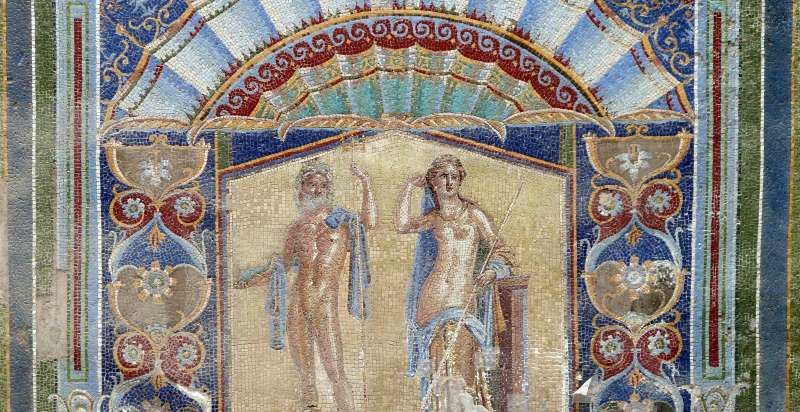
9. The Spear Bearer (Doryphoros)
While this masterpiece recalls Greek ancient art and culture more, the replica of the spear bearer’s Roman marble or the Doryphoros is notable. This jewel is known as the Polykleitos Doryphoros, an astonishing Greek sculpture portraying an athlete with his left-hand spear with the point resting on the shoulder. In Pompeii, the earliest copies of Roman marble go to 120-50 BC.
Instead of constructing the sculpture out of bronze similar to the ancient Greeks, the Romans constructed their Doryphoros using marble, which was far cheaper. The ancient Romans had a general tendency to use such sculptures in the plots and houses of wealthier patrons. While nothing of the innovative spear bearer survives today, its popularity among Roman patrons and emperors led to its prominence in art history.
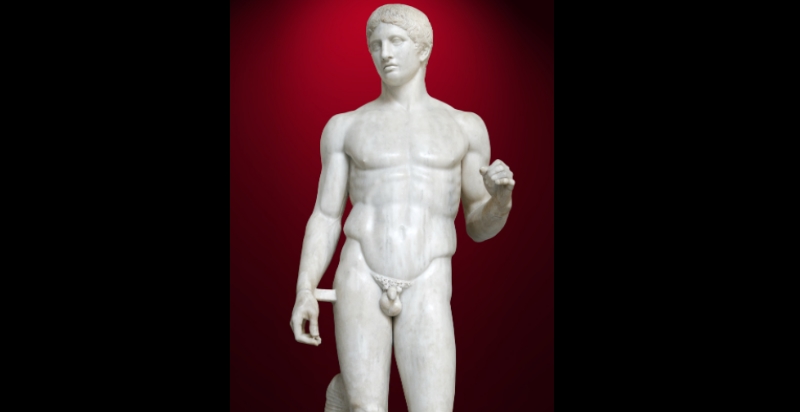
8. Ixion Room, House of the Vettii
The Vettii House was one of Pompeii’s most prestigious and well-known residences in the Roman period. The magnificent interior of this house was luckily saved for contemporary art lovers and enthusiasts by the eruption of Mount Vesuvius about 79 AD. From that time, it features a variety of amazing frescos. The largest spectacle in the Ixion Room is an architectural exhibition whose origins lie in ancient Greek mythology.
Virtually every wall of the Vettii House has exquisite mosaics, each of which has its background. But the Ixion Room is better remembered for its portrayal of Ixion’s agony. As he sought to win Hera’s love, Ixion was fooled and punished by Zeus. The fresco depicts the picture in which Hermes declares Ixion to be fiery wheel-chained. Hephaestus is seen rotating the wheel as Hera sits by a woman begging for Ixion on the throne. The fresco is characterized by the creative recollection of this famous mythological occurrence.
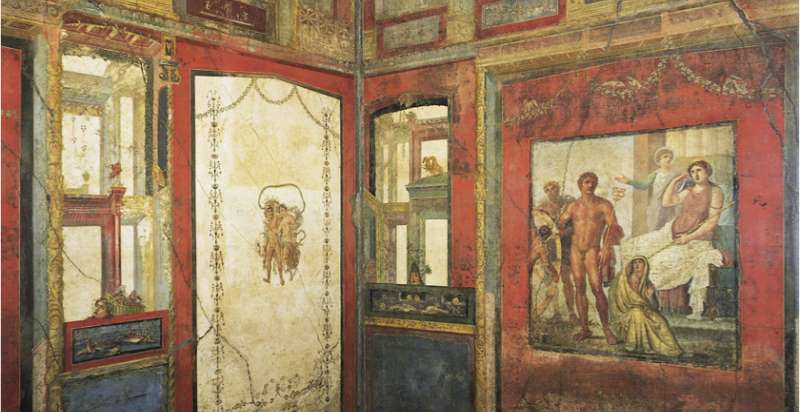
7. Arch of Septimius Severus
Septimius Severus is an iconic arch designed to symbolize and represent Roman victories over the Parthians in the late second siecle BC. In the context of the military conquests, which were a significant factor in extending the Roman empire into parts of today’s Iraq and Iran, Septimius had an arch of triumph. This colossal arch was made of Proconessian white Marble from the Marmara Sea, which is nearly 21 meters long and has a width of over 23 meters.
The arch possesses some outstanding sculptures representing scenes from the military campaign toward the Parthians, various deities, and the busy seasons. But perhaps the most notable feature on the arch was the inscription on the top creatively written using gilded bronze in commitment to Septimius Severus himself and his two sons, Caracalla and Geta. One of the most striking pieces of construction, the Arch of Septimius Severus, reaches this day as a lasting memorial to ancient Rome.

6. Column of Marcus Aurelius
The Column of Marcus Aurelius was designed to honor the victorious military camps carried out by Emperor Aurelius against the German and the Sarmatian tribes, modeled on its most famous counterpart, the Trajan column. Its height of 39 meters, when you compare it to its seven-meter underground floor, is much more remarkable. This seemingly straight Doric column is decorated with 21 spiral relief statues, each showing the individual campaigns by Marcus Aurelius between 175 and 172 BC against the Germans and Sarmatians.
While many of these stories depict events during both main struggles, there are also intriguing scenes in which Marcus addresses his soldiers or highlights great Roman engineering performances. The scenes are more expressive and symbolic than those on the Trajan Column, but the latter has more delicious relief, and the efficiency of the production is far better.
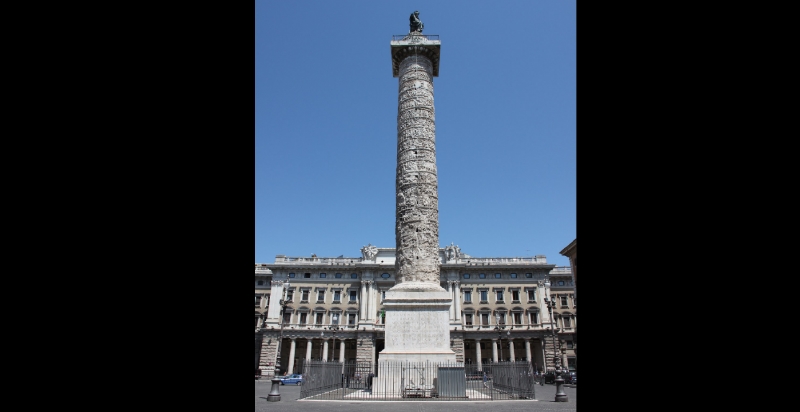
5. Arch of Constantine
Roman emperors had to construct temples of triumph greater than life that glorified their greatest accomplishments and successes. Thus, after a successful campaign against Maxentius in the Battle of the Milvian Bridge, Constantine, the latest Roman great emperor, agreed to build a colossal arch to remind the Roman citizens of their triumph over this great enemy.
The Arch of Constantine is the biggest triumphant ark remaining. It is also the only great monument of imperial Rome since the Roman Empire fell at the end of Constantine’s rule. This giant monument had three distinct arches at an impressively high height of 21 meters with an even wider diameter, one wide in the middle of the building and two smaller on each side. The lower section of the arch shows the art of the Milvian Bridge War.

4. Dionysus frieze, Villa of Mysteries
When Mount Vesuvius erupted in 79 ANC, the Villa of Mysteries may have been ruined, but luckily, most of its walls, along with its sculptures and frescoes, were only slightly damaged. What distinguished this villa was a space in which fascinating scenes were shown. This room is now known as the Initiation Chamber, on the front right of the villa.
The term “mysteries” applies to arcane initiating rituals that certain persons performed while growing up. According to ceremonies necessary for women, the frescos depicted a young girl who participates in a ceremonial union. Another view said that the frescos in this room depict the spiritual progress over the different phases of life rather than the accomplishments of an individual.
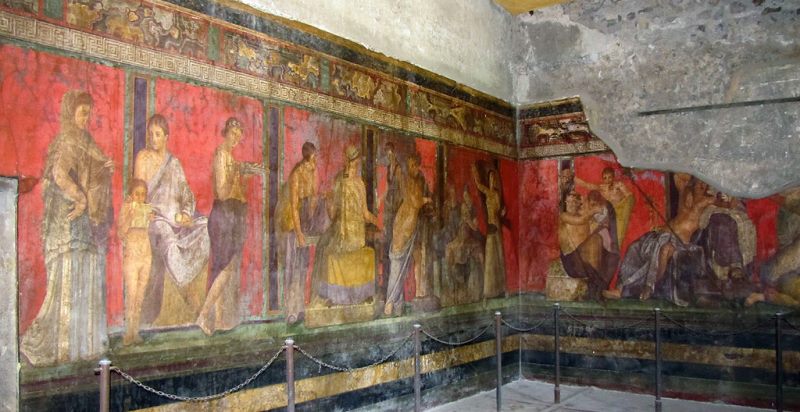
3. Altar of the Augustan Peace
The Roman Senate, which returned after active campaigns in Spain and Gaul, commissioned an altar of Augustan Peace on 4 July 13 AD. It was perhaps among the most immeasurable examples of Roman art and a major jump in Roman portraiture when it was finished on January 30, 9 BC. Ara Pacis has two entrances surrounded by high walls, one east, and one west. Nearly every inner and outer wall has been sculpted with exquisite sculptures.
However, the external decor of the enclosed walls, along with representations of a parade of representatives of the imperial house on the North and South walls, stands out. The east and west walls are engraved with pictures showing the themes of unity and the Roman rituals. During the Augustinian reign, the Romans had a time of great peace, and the altar itself was representative of Pax, which Augustus will retain for most of his reign.
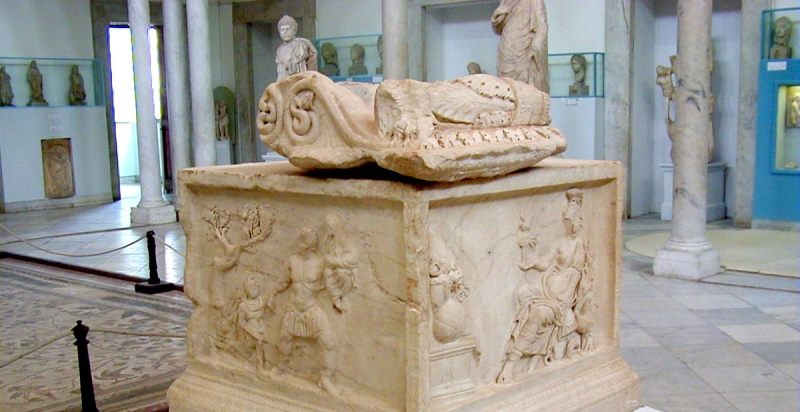
2. Column of Trajan
It is one of the most well-preserved landmarks of ancient Rome. Moreover, 2,662 figures carved into the surface of its breathtaking construction alone, representing 155 different scenes, which allow it to tell its own story. The scenes depict famous marches of the Roman legions, massive fighting (particularly those of the Dacian Wars), negotiations, sacrifices, speeches of Trajan, and many other political events in ancient times.
Trajan is a leading character in scenes from the battle in Dacia, who has numerous military roles in the scriptural story. Naturally, Trajan’s Column and its spiraling plot provide an in-depth view into Roman military coordination, administration, and operations. The Trajan Column has for a very long time attracted artists and historians because of its historical importance and popularity as a long-standing landmark.

1. Fresco Wall (The House of Livia)
The House of Livia is a Roman house almost 2,000 years old with some of the most beautiful wall frescoes and floor mosaics you might have seen in Rome. And happily, the House of Livia preserves nearly all of its magnificent charm for contemporary art lovers. Augustus’s wife, Livia, is known for this palace. In her day, a woman was so strong and influential that even the Roman Senate had given her the title of Mother Patriae or Mother of the Fatherland.
There are captivating and authentic wall paintings in the inner walls of Livia House portraying natural beauty. Exotic birds, insects, flowers, and trees, with such attention to detail, flora, and fauna, have been painted that researchers may also recognize specific species. While nearly 2,000 years old, it still represents a splendid example of natural beauty represented by sculpture. That’s why it ranked number one on our list of top ten excellent Pieces of Ancient Roman Art.
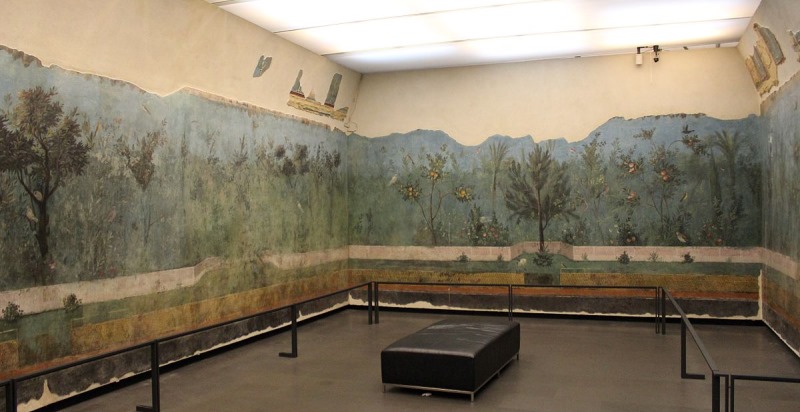
Conclusion!
It is possible to infer from the above list that ancient Roman art incorporated a vast array of artistic methods and used almost any material built into a lasting piece of art. The ancient Romans used ceramic marble to make wonderful mosaics and even create sculptures of enduring historical importance using various forms of marble.
Rome was the center of cultural flair in both the Constitutional and scientific periods and as a capital of a flourishing empire. Greek, Mediterranean, and even Egyptian elements were only common to see in ancient Roman architecture. Still, these enduring temples and villas have shown some of the most beautiful works of art and bear witness to the great artistic heritage of ancient Rome.
